- In the third part of Problem 3 on Assignment 3 you are asked to create a function that would produce iterations of the Cesaro fractal which depends on angle $\alpha$. The four pictures below show the 0th, 1st, 2nd and the 3rd iteration of the Cesaro fractal with the small angle $\alpha = \pi/16$.
- Below is an animated gif file that cycles through the 1st, 2nd, 3rd, 4th, 5th and the 6th iteration of the Cesaro fractal and, within each of the iterations cycles through all the angles starting from $\pi$, proceeding towards $0$ and then back to $\pi$ in steps of $\pi/50$. The animation starts by the first iteration and cycles through angles from $\pi$ to $0$ and back to $\pi$. This is repeated for 2nd, 3rd, 4th 5th and 6th iteration. For each iteration there are 101 pictures.
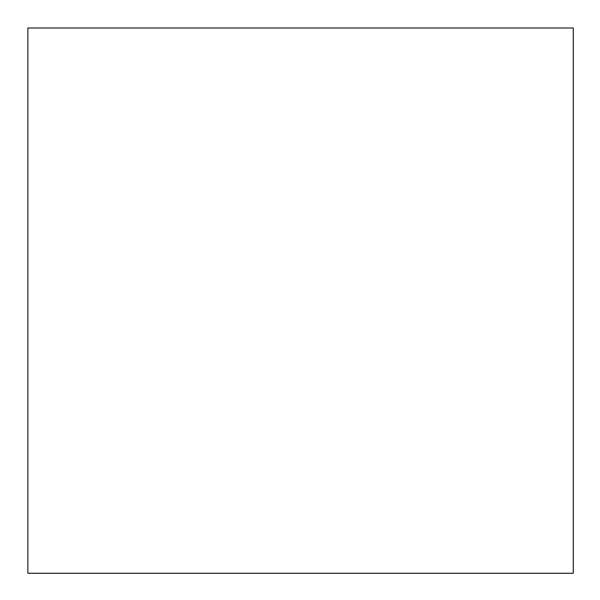
|
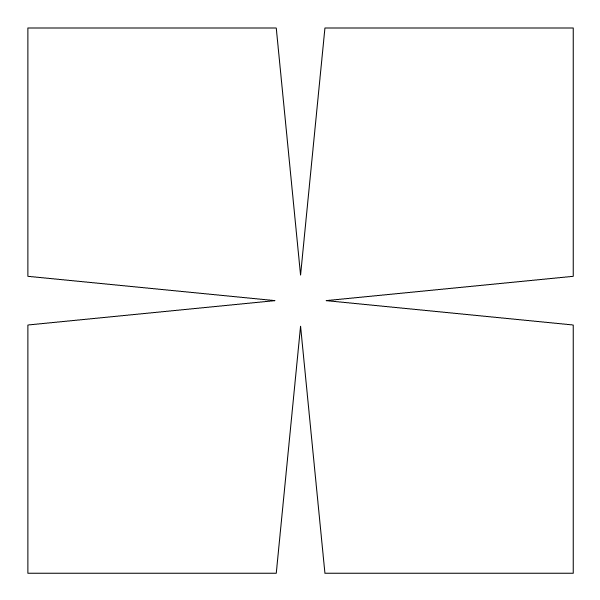
|
|---|---|
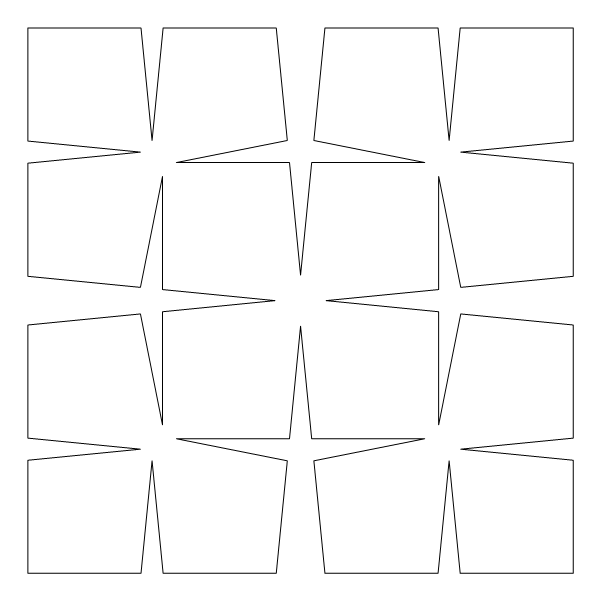
|
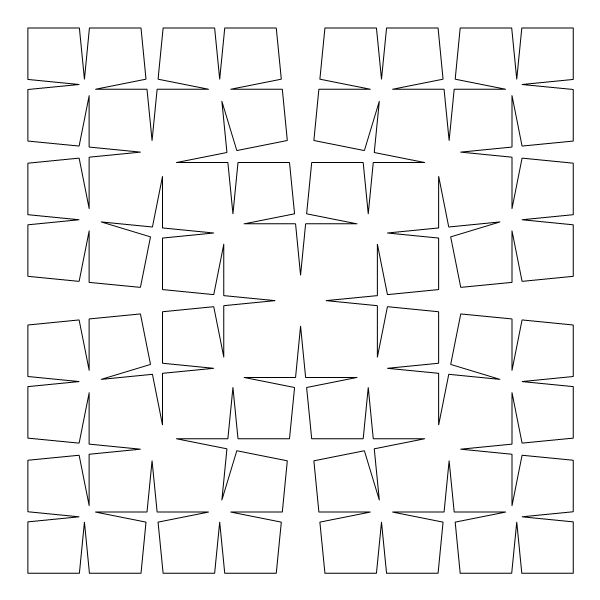
|
Place the cursor over the image to start the animation.
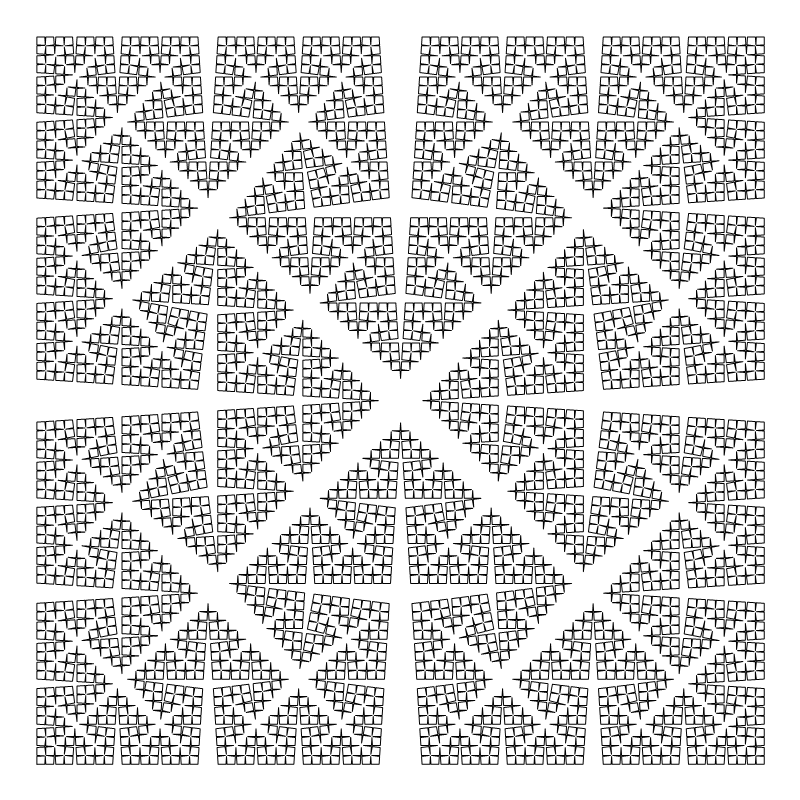
- In the first part of Problem 3 on Assignment 3 you are asked to create a function that would produce iterations of the quadratic type 2 curve. In the first picture below I show the 0th iteration in blue and the 1st iteration in red. I emphasize the points that are used. You do not need to do this on your plots. In the second picture below I show the 1st iteration in blue and the 2nd iteration in red. The large picture is the fourth iteration of the quadratic type 2 curve.
- In the second part of Problem 3 on Assignment 3 you are asked to create a function that would produce iterations of the von Koch snowflake. The four pictures below show the 0th, 1st, 2nd and the 3rd iteration of the von Koch snowflake.
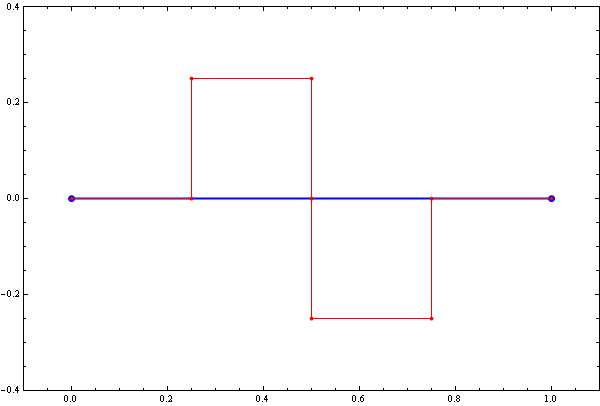
|

|
|---|---|
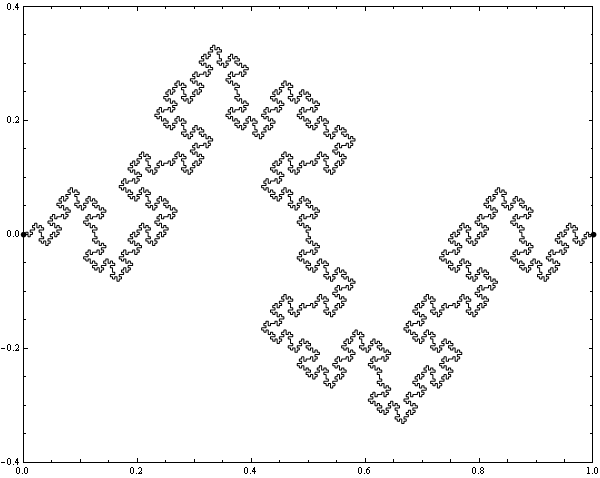
|
|
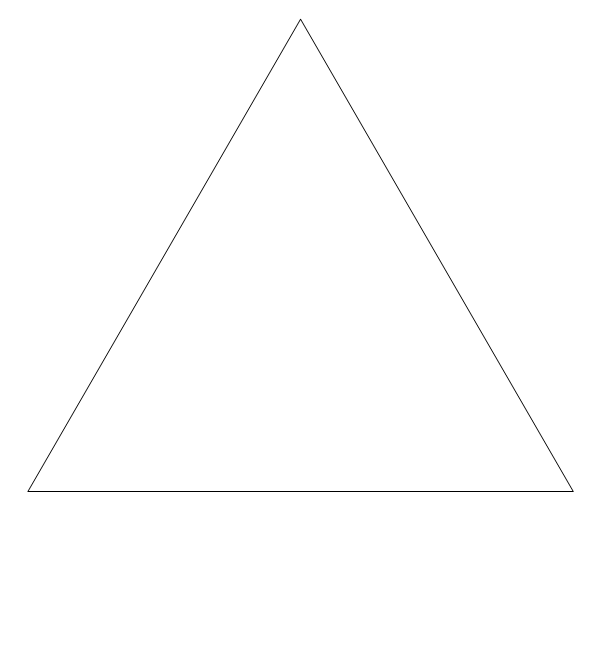
|
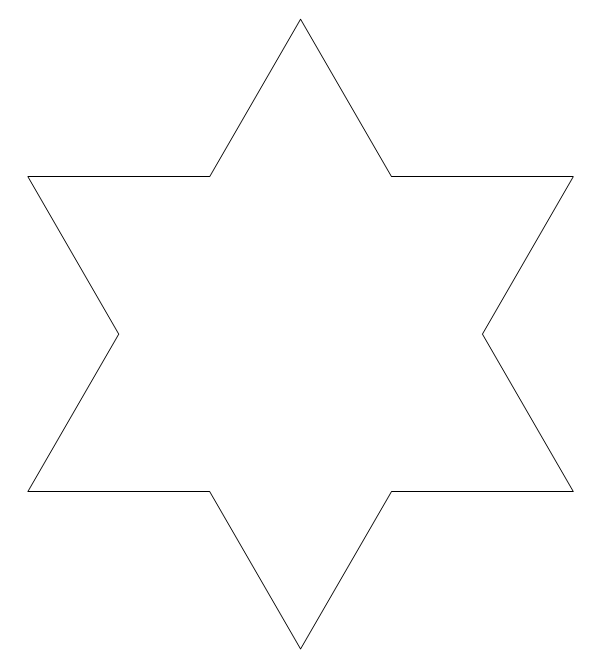
|
|---|---|
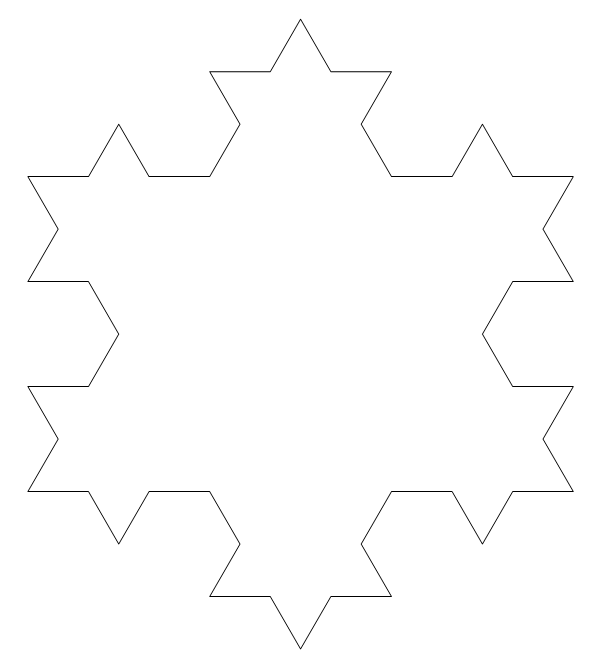
|
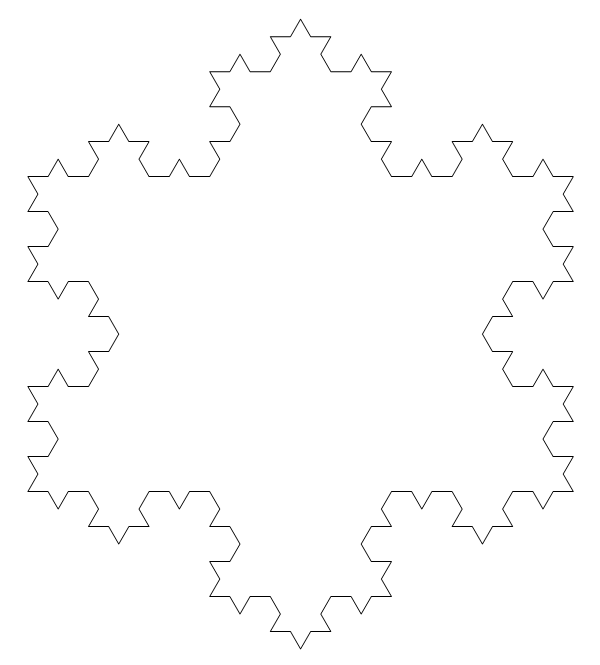
|
- Today we discussed some issues related to Problem 2 and Problem 3, see 20120522.nb. I noticed that some of you defined CoP[] or CoPs[] so that it includes Graphics3D[]. This is not a good idea. Please leave CoP[] and CoPs[] as I defined them in the assignment. You will need to use these functions on thousands of points in some pictures; see the last item on May 21.
- Important concepts of Pure Function and Module[{}, ] are discussed in 20120515.nb.
- Assignment 2 is due on Tuesday, May 29. I will start grading on Wednesday, May 30 at 10am.
- Problem 1. This problem is quite similar to the problem solved in ExpfTanl.nb. In this notebook there are many hints on what to do in this problem.
- Problem 2. This problem is an exploration of a surprising function. You should use what you learned in Calculus, but with the power of Mathematica. This function has some surprising features that you need to discover. When you discover these features, formulate them in clear answers to my questions. Support your answers with calculations and illustrations. To explore the function use the functions D[] to find the derivative and FullSimplify[] to simplify it. To find special points you can use Solve[], Reduce[] or FindRoot[] where appropriate. However, Mathematica needs a lot of human help in this problem. It is a very good example of human-machine interaction. Some hints for this problem are in 20120518.nb.
- Problem 3. Some hints for this problem are in 20120518.nb. In this problem you need to unify, as explained in the problem, three animations given below.
Place the cursor over the image to start the animation.

Place the cursor over the image to start the animation.

Place the cursor over the image to start the animation.

- Problem 4. Notebook 20120521.nb contains some hints to this problem. Please learn Apply[] in this problem. This problem is also a good example of mapping pure functions to lists of points. Practice code CoPs[#,0.03]&/@listofpts. Also, think of points as vectors.
- Assignment 1 is due on Monday, May 14. I will start grading on Tuesday, May 15 at 10am.
- Problem 1. In definitions the functions SqSin, SqCos, LiSin, LiCos, TrapSin, TrapCos, RoSin, RoCos in Problem 1 it is preferable to use compositions of Cos, Sin, Sign, ArcCos, ArcSin and modifications of resulting periods and amplitudes. If you use Mod, Floor, If and similar functions you might experience problems with Plot. These problems are caused by the plot option Exclusions->Automatic. Changing Exclusions->Automatic to Exclusions->None might fix the problem.
- Problem 1. When you adopt the content of The beauty of trigonometry to your funny Cos, Sin it is essential to pay attention to the proper domains for the variables involved. Here proper means that there should be no overlap in the parametric plots. In 3-d parametric plots overlaps can slow down plotting considerably. Your notebook should evaluate in less than 2 minutes.
- Problem 3 and 4. In class folders I put two notebooks: Parabola_demo.nb and Circumscribed_Circle.nb. From these notebooks you can learn how to use Manipulate to explore mathematical and Mathematica functions. This will be useful in Problems 3 and 4.
- Problem 4. When you work with mathematical objects you should always be aware of their domains of definition. Mathematica will not warn you about potential problems. However, when you use such objects in Manipulate errors might occur. For example in this Wolfram Demonstration Project, Manipulate gives a wrong illustration when three points are collinear. How to avoid such problems is illustrated in Parabola_demo.nb and Circumscribed_Circle.nb.
- Problem 2. For some useful stuff for Problem 2 see my Mathematica page, Section: Recursively defined functions.
- Mathematica part of the class will start on Monday, April 30, 2012.
- The information sheet
- We will use

- We also have

- To get started see my Mathematica page. Please watch the videos that are on this page before the first class.